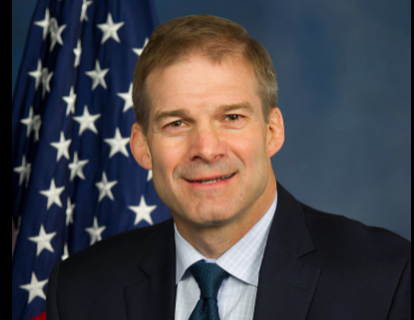Conservatives are falling all over themselves to denounce Critical Race Theory. Kevin McCarthy has compared it to Jim Crow. Jim Jordan demanded that we defund it. Ted Cruz calls it a “Marxist ideology.”
These statements, mostly laughable when taken at face value, have drawn lots of scorn. That’s understandable, but it shouldn’t blind us to the fact that something deadly serious is going on. Though inanities like those from McCarthy and Cruz have nothing to do with the reality of Critical Race Theory – which simply asks that we look at how racism became embedded in many American institutions and how that has created the huge racial inequities that plague our society – but they’re not just ignorant ravings. They have a purpose.

Look at the controversy that exploded in Tennessee in June about a school curriculum used in the state. Denounced as being a sinister introduction of Critical Race Theory, the “Wit and Wisdom” curriculum simply teaches some of this country’s actual history of discrimination and racism. One of the books that critics objected to, the Tennessean reported, “was Ruby Bridges Goes to School, written by Ruby Bridges herself. Bridges, when she was age 6, was one of the first African American students to integrate New Orleans’ all-white public school system.” Opponents were offended by Bridges’ factual description of being confronted by a crowd of angry whites who didn’t want a Black child attending “their” school.
That’s not Critical Race Theory. It’s history. It’s truth.
And that’s the point. The right wing, now fueled almost entirely by white grievance, doesn’t want students to learn about this country’s long history of mistreatment not only of Blacks, but of Native Americans, Latinos, Asian Americans and others. And they certainly don’t want kids to know that those policies have created a yawning racial wealth gap that lingers today. Estimates of this gap vary, but one of the more conservative, reported by the Federal Reserve in 2019, found the median wealth of Black Families was just 15 percent of white families. Latinos, Asian Americans, Pacific Islanders and mixed-race families all lagged behind whites.
That didn’t happen by accident. It resulted from deliberate policy choices—choices I never learned about in school. Despite having AP US History taught by a progressive young teacher who’d been a volunteer in Robert Kennedy’s presidential campaign and who had us read The Strange Career of Jim Crow, one of the definitive books on southern segregation, my education (like that of most US children) omitted nearly all of the things that created that racial wealth gap.
I never learned, for example, that Franklin Roosevelt’s Federal Housing Administration actively promoted and even required redlining – the marking off of non-white neighborhoods as unsuitable for mortgage lending, suppressing homeownership and wealth creation in Black and Brown communities. These FHA policies also tainted home mortgage assistance in the GI Bill after World War II, tilting the playing field even further toward whites.
I never learned that a variety of state and local policies, from zoning rules to decisions on where to locate freeways, were intentionally designed to create and maintain residential segregation. If you don’t know all this history (and don’t be embarrassed, many Americans don’t), read Richard Rothstein’s The Color of Law, which meticulously lays it out.
Help us save local journalism!
Every tax-deductible donation helps us grow to cover the issues that mean the most to our community. Become a 48 Hills Hero and support the only daily progressive news source in the Bay Area.
I didn’t learn that in order to get the New Deal through a Congress in which southern segregationists had virtual veto power, Roosevelt tailored programs not to disrupt Jim Crow, while Social Security excluded occupations dominated by Blacks, such as domestic and agricultural work.
I never learned that culturally biased “intelligence tests” got thousands and thousands of non-white kids labeled as “mentally retarded.” My grade school taught us a bit about Native American culture, while giving us a totally whitewashed version of Junipero Serra and the California missions and completely ignoring what Benjamin Madley has rightly termed An American Genocide.
Recent attempts to include a bit of this history and give students at least a glimpse of the truth are terrifying as hell to some because they threaten —watch out, here comes another term that sets conservatives’ hair on fire—white privilege.
Right-wingers regularly claim that white privilege doesn’t exist. It does. I know, because I benefitted from it.
My father went to Cornell University and Harvard Medical School in the 1930s. While those institutions, to their credit, did admit African Americans at that time, economic circumstances and lack of educational opportunities for Blacks in much of the country kept their enrollment overwhelmingly white. My dad’s old yearbooks show a sea of white faces.
After my father finished serving in World War II, my parents settled in an all-white community in Los Angeles County. African Americans and Latinos were consistently redlined out of this and up-and-coming neighborhoods, property values in the areas where they could live kept artificially low by discrimination, poor city services and lack of access to affordable mortgages and home loans.
My folks’ home was their primary financial asset. The value of that home grew, while black families in places like Watts didn’t do nearly as well.
When I was 15 my family joined the “white flight” to an even more affluent neighborhood near the coast. My high school of roughly 2,000 students had precisely two Black kids and one Latino. While we were house-hunting, I vividly remember a real estate agent cheerfully telling my parents about the tricks he used to ensure that Black families could never buy a home in white neighborhoods, regardless of the law. The house my folks bought quintupled in value in just over a decade.
That generational wealth, eventually handed down to me and my brothers, is the reason – the only reason – that I am a San Francisco homeowner today, holding onto an asset that is appreciating wildly and will eventually finance a reasonably comfortable retirement. And when I and my brothers ran into financial troubles, the Bank of Mom and Dad always had the assets to help out.
None of this is to put down my parents, who worked hard for everything they had. But doors were open for them that were padlocked shut for people living just a few miles away who happened not to be white. I have benefited from that, a lot.
White privilege, of course, goes far beyond economics. As a teenager in an affluent suburb, I learned to drive in my parents’ white Mercedes-Benz. It never occurred to me back then how police might have reacted to a Black 17-year-old driving that car in that neighborhood. After Philando Castile, Tamir Rice and too many others, we know now.
As the National Association of Criminal Defense Lawyers has pointed out, the evidence of racially disproportionate policing is overwhelming. Among other things, they note that Black Americans are “more likely to be stopped by police than white or Hispanic residents, that Black and Hispanic residents were more likely to have multiple contacts with police than white residents, and that when police initiated an interaction, they were twice as likely to threaten or use force against Black and Hispanic residents than against white residents.” This results in wildly disproportionate rates of arrests and incarceration, which both turns families upside-down and devastates their finances.
During the recent controversies over racist policing, we’ve all read about Black parents having “the talk” with their kids about how to interact with police – things like avoiding sudden movements and always keeping your hands visible so they don’t perceive an imaginary “threat.” Well, my dad also had a talk with me about the police when I was about seven. It went like this:
“If you’re ever lost or in trouble or need help, look for a policeman. The police are our friends.”
And for me, as a suburban white child, that was true.
Yes, much of the blather about Critical Race Theory is posturing from politicians whose only platform is fear. But it’s also a desperate attempt to stem the erosion of white privilege.
From the Black Lives Matter movement and criminal justice reform to the Biden administration’s efforts at racial equity to the first serious efforts in California and elsewhere to explore reparations for our racist past, we’re seeing arguably the most meaningful efforts to roll back white privilege in the nation’s history. And privilege is a hard thing to let go of.



